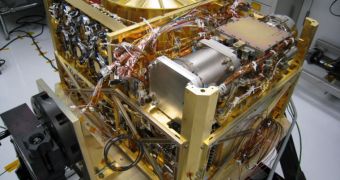Officials at the American space agency announce that one of their team has just finished assembling one of the instrument suites that will go on NASA's next Mars rover, called Curiosity.
The Sample Analysis at Mars (SAM) instrument suite has finished undergoing relevant testings, and is now on track towards being delivered to experts managing the construction of the rover, this December.
The device was assembled at the NASA Goddard Space Flight Center (GSFC), in Greenbelt, Maryland, and will be delivered to the Jet Propulsion Laboratory (JPL), in Pasadena, California.
A division of the California Institute of Technology (Caltech), the JPL manages the Mars Science Laboratory (MSL) mission, which needs to place Curiosity on the surface of the Red Planet by August 2012.
At this point, a launch date is tentatively set for next year. Construction, assembly and testing are now going smoothly, and mission managers are hopeful that the deadline will be met.
“We expect Curiosity will make amazing discoveries, and we are looking forward to the contributions our mobile chemistry laboratory can make to a better understanding of the history of our neighboring planet,” says Dr. Paul Mahaffy.
The GSFC expert is the principal investigator for the SAM instrument suite. The device's goal is to help determine whether the Martian environment was or is able to support microbial life.
In doing so, the automated, mobile laboratory will be joined by other instruments that will go on the MSL rover, including a high-energy laser and an advanced spectrograph, NASA officials say.
The SAM suite is made up of a mass spectrometer, a gas chromatograph, and tunable laser spectrometer, the GSFC team that built it says. All the components are now in flight configuration.
A series of vibration and thermal tests meant to assess its readiness to fly were performed last week, and its builders say that the instrument is now able to withstand the rigors of launch and landing.
“Once at Mars, SAM will examine the planet's habitability by exploring molecular and elemental chemistry relevant to life. SAM will analyze samples of Martian rock and soil to assess carbon chemistry through a search for organic compounds,” NASA says.
“The lab will also determine the chemical state of light elements other than carbon, and look for isotopic tracers of planetary change,” the press release concludes.
The MSL will be the biggest rover ever deployed to Mars. It is the size of a Mini Cooper and has a weight of nearly a ton. It will be the first mission to be deployed via the revolutionary Air Crane system.

 14 DAY TRIAL //
14 DAY TRIAL //